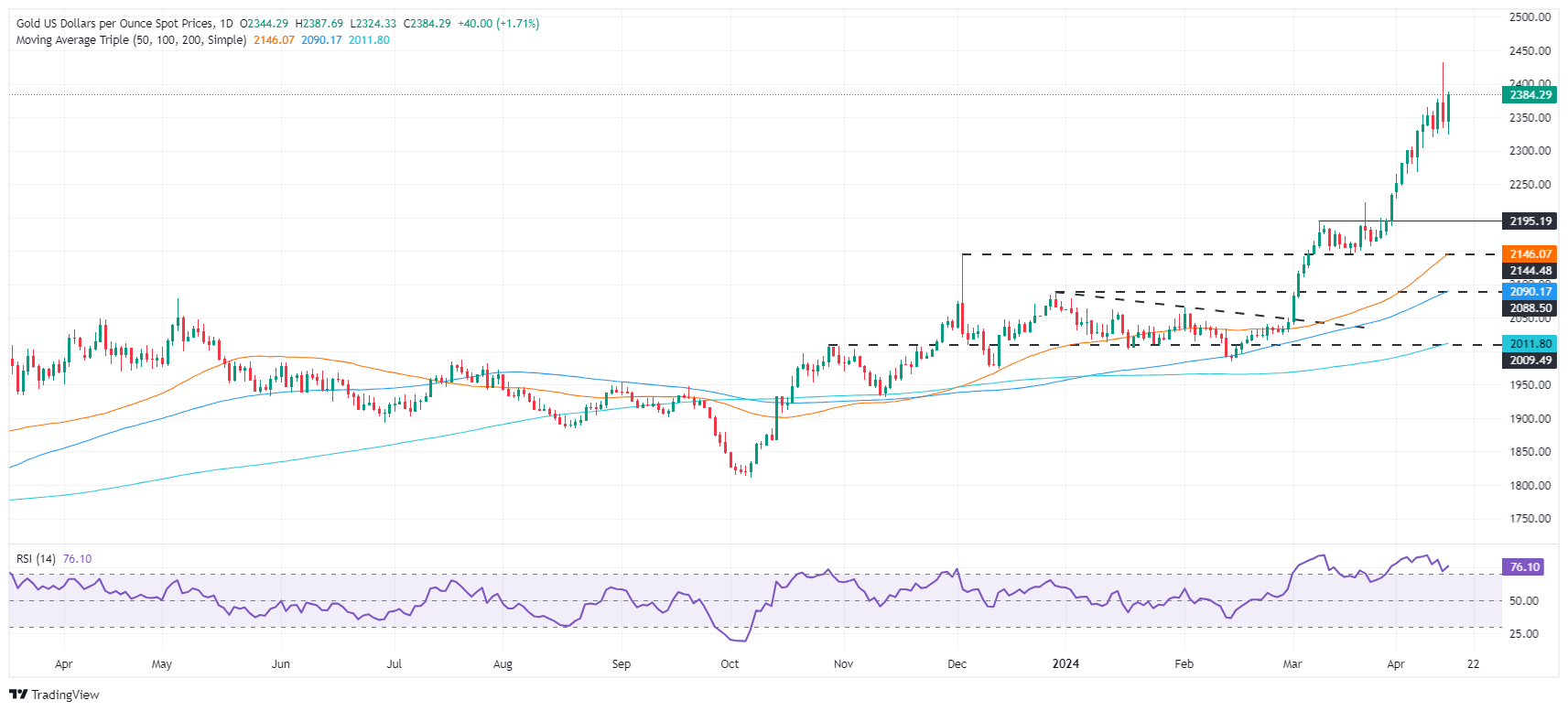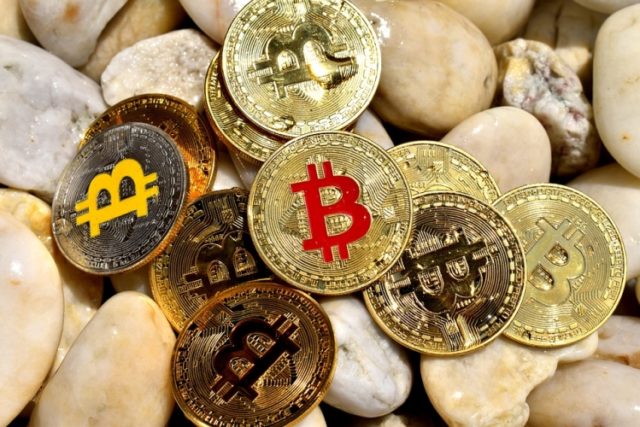- Gold prices rose more than 1% as US retail sales data indicates sustained economic strength.
- Escalating geopolitical tensions between Iran and Israel increase demand for safe-haven assets, boosting Gold.
- Aside from strong US economic numbers, gold is benefiting from physical demand and its appeal as a safe haven asset amid geopolitical uncertainty.
The price of Gold rose more than 1% in the middle of the North American session following strong economic data from the United States (US). Consumer spending was stronger than expected, which could prevent the US Federal Reserve (Fed) from reducing borrowing costs, which would be a tailwind for the gold metal. However, physical demand for Gold and risk aversion could keep the precious metal around current levels.
The XAU/USD pair is trading at $2,384 after hitting a daily low of $2,324. Investors remain concerned about possible Israeli retaliation following Iran's missile and drone attack over the weekend. Although the White House urged Israel not to retaliate, the Israeli military chief said: “There will be a response to Iranian missiles and drones launched into Israeli territory.”
That could support safe-haven assets, including gold and the US dollar. It wouldn't be strange if they moved in tandem.
On the other hand, US retail sales for March were strong. What grabbed the headlines was that sales of the control group – used to calculate Gross Domestic Product (GDP) – shot up sharply, which could be a prelude to strong growth in the first quarter of 2024.
Following the release of the data, Gross Domestic Product (GDP) estimates for the first quarter of 2024 show that the US economy will grow 2.8%, up from 2.4% estimated on April 10, according to Atlanta's GDPNow model.
Daily summary of market movements: Gold: strong US retail sales and high US yields
- March U.S. retail sales rose 0.7% month-on-month, beating the 0.4% forecast. This rise contributes to growth of 2.1% in the first quarter of 2024 compared to the period last year, a sign of strong consumer activity.
- Retail sales for the control group, which provides a more accurate measure by excluding volatile items, rose from 0.3% in February to 1.1% monthly in March, significantly exceeding expectations for a 0.4% increase.
- The price of Gold remains high despite US Treasury yields rising more than 10 basis points (bps) in the ventral and long part of the yield curve.
- Additionally, the US Dollar Index (DXY), which tracks the dollar against a basket of six other currencies, gained 0.20% to 106.22, levels last seen in November 2023.
- New York Fed President John Williams has said his baseline scenario sees rate cuts “likely starting this year,” and he believes policy is restrictive, adding that strong fundamentals are driving government spending. consumer.
- Data from the Chicago Board of Trade (CBOT) suggests that traders expect the Fed funds rate to be 4.965% in 2024.
Technical Analysis: Gold remains bullish despite RSI at overbought levels

From a technical point of view, Gold remains bullish, despite the bullish trend being at overbought levels, which is confirmed by the Relative Strength Index (RSI). The RSI is overbought by the usual “rules”, but traders should keep in mind that the 80 level is often considered the most extreme overbought condition in a strong uptrend. With the RSI at $75.82, it is not ruled out that XAU/USD will retest $2,400. The next resistance would be the all-time high at $2,431, followed by $2,450.
On the other hand, a daily close below the April 12 close at $2,343 could open the door to push the price of Gold towards the $2,300 mark. Once broken, the next support would be the April 5 low at $2,267.
Frequently asked questions about Gold
Gold has played a key role in human history, as it has been widely used as a store of value and medium of exchange. Today, apart from its brilliance and use for jewelry, the precious metal is considered a safe haven asset, meaning it is considered a good investment in turbulent times. Gold is also considered a hedge against inflation and currency depreciation, as it is not dependent on any issuer or government.
Central banks are the largest holders of Gold. In their aim to support their currencies in turbulent times, central banks tend to diversify their reserves and purchase Gold to improve the perception of strength of the economy and currency. High Gold reserves can be a source of confidence for the solvency of a country. Central banks added 1,136 tons of gold worth about $70 billion to their reserves in 2022, according to data from the World Gold Council. This is the largest annual purchase since records exist. Central banks in emerging economies such as China, India and Türkiye are rapidly increasing their gold reserves.
Gold has an inverse correlation with the US Dollar and US Treasuries, which are the main reserve and safe haven assets. When the Dollar depreciates, Gold tends to rise, allowing investors and central banks to diversify their assets in turbulent times. Gold is also inversely correlated with risk assets. A rally in the stock market tends to weaken the price of Gold, while sell-offs in riskier markets tend to favor the precious metal.
The price can move due to a wide range of factors. Geopolitical instability or fear of a deep recession can cause the price of Gold to rise rapidly due to its status as a safe haven asset. Being a non-yielding asset, Gold tends to rise with lower interest rates, while the higher cost of money usually weighs on the yellow metal. However, most of the movements depend on the behavior of the US Dollar (USD), as the asset is traded in dollars (XAU/USD). A strong Dollar tends to keep the price of Gold in check, while a weaker Dollar is likely to push up Gold prices.
Source: Fx Street
I am Joshua Winder, a senior-level journalist and editor at World Stock Market. I specialize in covering news related to the stock market and economic trends. With more than 8 years of experience in this field, I have become an expert in financial reporting.







